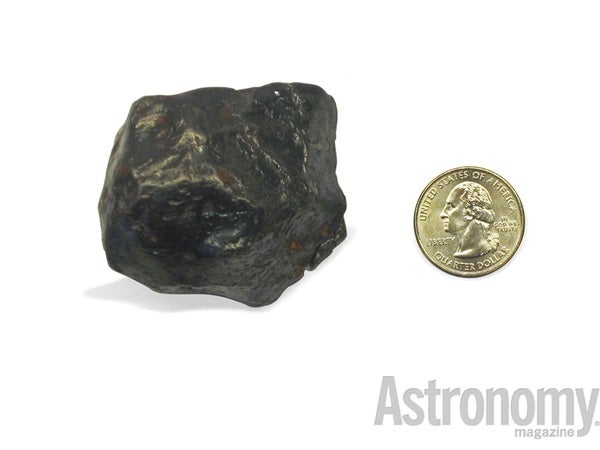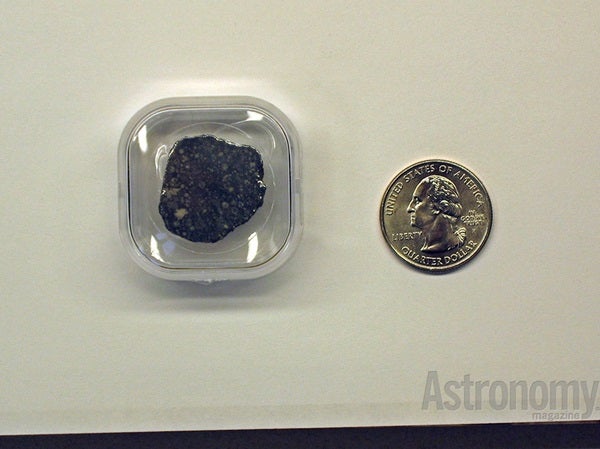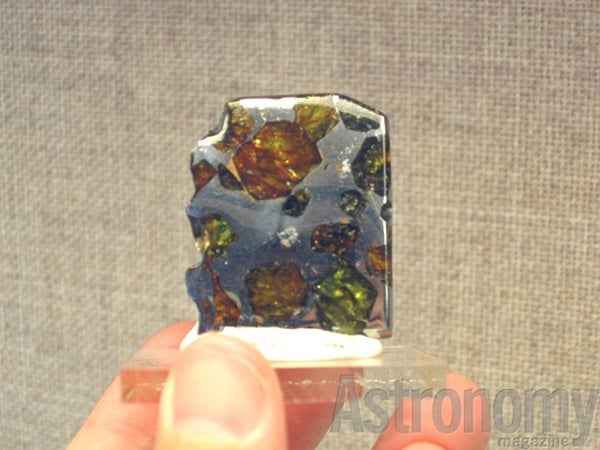Every night, it’s possible to see a brilliant flash make its way across the sky. Meteors are beautiful, startling, and a reminder that debris lies scattered throughout the solar system; some of it falls toward Earth. Collectors prize meteorites — particles that survive to strike Earth’s surface — and value holding a piece of the distant solar system in their hands.

Bringing the universe to your door. We’re excited to announce Astronomy magazine’s new Space and Beyond subscription box – a quarterly adventure, curated with an astronomy-themed collection in every box. Learn More >>.
Altogether, about 38,000 meteorites have been recovered. The most common are available for a few tens of dollars for each small piece — the least common types go for several thousand dollars per gram.
Nearly all meteorites are pieces of asteroids, most of which lie in the main asteroid belt between Mars and Jupiter, but others were born in more distant reaches of the solar system. A few may be pieces of comets. Some are fragments of Mars or the Moon.
Nearly all meteorites are pieces of asteroids, most of which lie in the main asteroid belt between Mars and Jupiter, but others were born in more distant reaches of the solar system. A few may be pieces of comets. Some are fragments of Mars or the Moon.
How do scientists know about the origins of meteorites? First, they separate meteorites into three classes — stones, irons, and stony-irons. In general, irons originate in the metallic cores of asteroids, while stones are pieces of the outer mantle or crust of asteroids. Stony-irons, rare compared with the others, are boundary pieces containing mostly metals but also silicate minerals.
Within the class of stone meteorites exists an important type called carbonaceous chondrites. These meteorites contain chondrules, millimeter-sized orbs of minerals that were once molten droplets. These primitive meteorites give scientists a window to the early solar system; the chondrites formed from aggregates of dust flash-melted during the solar system’s earliest days, when the Sun and Earth were forming. Meteorites, like the one that fell in Allende, Mexico, or the inky-black, carbon-dominated Tagish Lake specimen from British Columbia, provide an unfettered glimpse at the most primitive matter we know about.
About 95 percent of meteorites that fall are stones. Of those, 34 are known to have originated from Mars. How is this possible? Take the case of the largest and most celebrated martian meteorite, Zagami, which fell in Nigeria in 1962. Zagami is a basaltic shergottite, which means it’s similar to Shergotty, the second martian meteorite found. Zagami’s solidified lava crystallized about 1.3 billion years ago in a magma chamber. The certainty of its martian origin comes from its young age (much younger than the crystallization ages of most meteorites), the gas isotopic composition that matches the martian atmosphere (compared to Viking lander data), and the high deuterium-to-hydrogen ratio.
Similarly, 39 meteorites are known to have come from the Moon. As with the martian meteorites, these objects were knocked into space in antiquity by large impacts, and their orbits eventually brought them into Earth’s gravitational tug. As an example, Dar al Gani 400, the largest lunar meteorite, fell in the Libyan Sahara in 1998. It is a feldspathic regolith breccia, meaning it contains large amounts of the mineral anorthite, a calcium-aluminum silicate mineral that is abundantly present in the lunar highlands. The lunar meteorites’ chemical compositions, isotope ratios, mineralogies, and textures all match the samples brought back by the Apollo astronauts.
All meteorites except those from the Moon and Mars, however, originated from the asteroid belt. Because of the numerous similarities among meteorites and asteroids, their huge numbers, and the fact that many asteroids have since fragmented and broken up, it’s difficult to match meteorites with their parent bodies. Three subclasses of stone meteorites — howardites, eucrites, and diogenites — are high-temperature basaltic rocks similar in composition to the asteroid 4 Vesta, so Vesta is likely their parent body. The primitive carbonaceous chondrite Tagish Lake has been spectroscopically tied to asteroid 368 Haidea. Most associations are made simply by asteroid classes, as astronomers have much more work to do to tie specific asteroids to meteorites that have fallen to Earth.












